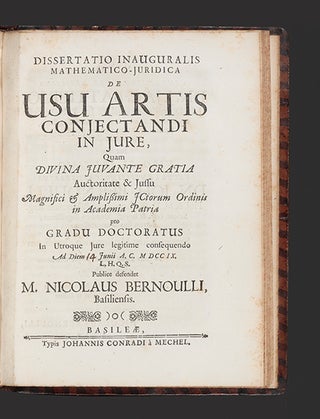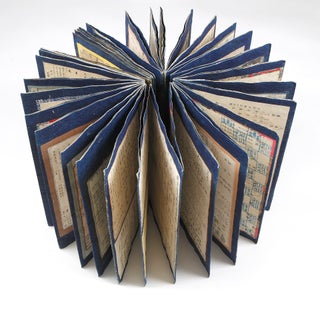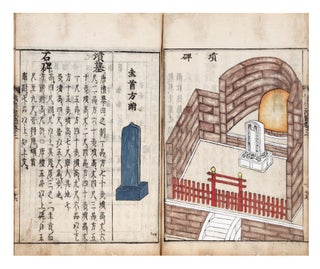The Various Wisdom Kings
Handscroll on paper, entitled on a slip of paper formerly pasted on outside: “Sonyōshō” 尊容抄 [“Annotations on the Noble Countenances (of the Deities Depicted)”].
20 fine brush & black ink drawings of deities & several smaller images. Scroll (290 x 11,980 mm.), delicately ruled in gray ink, wooden roller. [Japan]: 17th-18th century copy?
A copy of the eighth scroll from the ten-scroll set known alternatively as “Zuzōshō” 図像抄 [“Annotated Drawings”] or “Sonyōshō” 尊容抄 [“Annotations on the Noble Countenances [of the Deities Depicted]”], along with “Jikkanshō” 十巻抄 [“Annotations of Ten Scrolls”]. Our scroll is also entitled on outside of scroll “Sho myōō” 諸明王 [“The Various Wisdom Kings”]. The original was made in Japan in 1139-1140 CE (Hoen 5), towards the end of the Heian period. This set of scrolls is associated with esoteric Buddhism and depicts Buddhas, bodhisattvas, devas, and wisdom kings (myōō). It is not known if the scrolls were actually used as guides to worship, but they were clearly assembled with this purpose in mind. Early sources ascribe the scrolls to different authors, either Yōgon 永厳 (d. 1151) or Ejū 恵什. Scholars have concluded that Yōgon received an order from retired emperor Toba 鳥羽 (1103-56) to produce the scrolls. Yōgon might have made a preliminary collection of sources, but then gave the task to Ejū, who is considered to be the real author.
The original set is lost; the oldest extant copy, held at the Daigo-ji 醍醐寺 temple in Kyoto, dates from 1193, and another early copy, dated 1226 (early Kamakura period), is held at Jōraku-ji 常楽寺 in Konan. Copies of the scrolls were produced into the Tokugawa period (1603-1867).
Our scroll contains a series of 20 fine and large brush and black ink drawings of deities and several smaller drawings. The latter include schematics of the deities’ attributes, such as a vajra “thunderbolt” sword (a symbol associated with sudden enlightenment), an eight-spoked dharmachakra disk, and a two-pronged vajra with rope. There are some annotations in red ink.
Our eighth scroll includes eleven wisdom kings in total. A description of the contents of “Zuzōsho” specifies that the eighth scroll contains the irate wisdom kings: these usually number ten, but in “Zuzōsho,” including our copy, eleven deities are represented. This scroll is simply titled “various wisdom kings.” These are the eleven:
1. Acala 不動使者, “the immovable.”
2. Trailokya-vijaya 降三世, “conqueror of the three worlds.”
3. Kuṇḍalī 軍荼利, a guardian king.
4. Yamântaka 大威德, “of awe-inspiring power,” the “terminator of death,” depicted here riding a water buffalo.
5. Vajrayakṣa 金剛夜叉, here depicted with three faces and six arms, as is customary.
6. Ajita 無能勝明王, “the unsurpassable.”
7. Great Wheel Vajra 大輪明王, “destroyer of delusion.”
8. Padana-kṣipa-vidyā-rāja 步擲明王, one of the great luminous kings, often depicted as holding a disk in his right hand and a vajra-mallet in his left hand. Here, the disk appears to be a kind of parasol.
9. Ucchuṣma 烏瑟渋摩明王 (on the scroll written as 烏瑟澁摩明王), “the unclean” 不淨, who has the power to purify.
10. Vajrakumāra 金剛童子, a youth.
11. Āṭavika太元帥明王, “the great commander.”
The scroll is structured with the name of each deity given as a heading, below which is basic information followed by quotes from various sources. Basic information includes a deity’s “Sanskrit appellation,” “secret appellation” (e.g., “Protector of the dharma diamond,” for Vajrayakṣa), “seed syllables” (represented in Siddham characters), “samaya” (sangyō 三形, short for sanmayagyō 三昧耶形, an object representing the deity; in the case of Vajrayaksa, “bell blade tooth”).
The text that accompanies the images includes quotes from canonical Buddhist literature; “hymns” (san 讚) — a kind of dhāraṇī, we believe — where Chinese characters represent Sanskrit sounds; as well as references to statues of the deities kept in temples. Tō-ji 東寺, a famous Shingon temple in Kyoto, is mentioned as one housing such statues.
These sources are marshalled to describe the appearance of the wisdom kings. Texts quoted here, referring to Atavika, is “Translation of the esoterica of the place of practice by Śubhakarasiṃha of the Great Tang” 唐大善無畏內道場祕譯, a section in the “Commentary for the practice of rituals related to the Sutra of the Supremely Enlightened Dhāraṇī of Āṭavika, the Great Commander” 阿吒薄俱元帥大將上佛陀羅尼, which is included in the Buddhist canon (T 1239 in the Taishō canon). The author of this text, Śubhakarasiṃha (637-735 CE), was an Indian monk who propagated esoteric Buddhism in China and was an important figure for the esoteric Shingon sect in Japan. Another text quoted, describing the appearance of Acala, is “Esoteric dhāraṇī spells of the messenger(s) of Akṣobhya” 不動使者陀羅尼祕密法 (T 1202), translated by Vajrabodhi 金剛智 (671-741 CE), one of the eight patriarchs of the doctrine in the Shingon lineages. Descriptions include the color of the deities and their clothes, facial expression, the number of arms, the items they hold and how they hold them, and their mudrā (hand gestures representing a message of the Buddha’s teaching).
The various Buddhist scriptures that had been brought to Japan from China often did not agree on the physical appearance and attributes of the wisdom kings. Ejū’s text points this out, and also, as mentioned, references the appearance of statues held in Japanese temples. Tamura Takateru notes that Ejū takes a relatively scholarly attitude in the discussion of these sources, rather than following a doctrinal need to promote Shingon over the rival esoteric sect of Tendai.
In fine condition. Occasional minor staining and a few small wormholes in lower margin.
❧ Tamura Takateru 田村隆照, “Zuzōshō seiritsu to naiyō ni kansuru mondai” 図像抄—成立と内容に関する問題 Bukkyo geijutsu 仏教芸術, Vol. 70 (1969), pp. 53 & 63. Other undated copies of the eighth scroll are accessible online at the Met (https://www.metmuseum.org/art/collection/search/44911) and Keio University (https://objecthub.keio.ac.jp/ja/object/1683).
Price: $8,500.00
Item ID: 9130

![Item ID: 9130 Handscroll on paper, entitled on a slip of paper formerly pasted on outside: “Sonyōshō” 尊容抄 [“Annotations on the Noble Countenances (of the Deities Depicted)”]. EJŪ 恵什.](https://jonathanahill.cdn.bibliopolis.com/pictures/9130.jpg?width=768&height=1000&fit=bounds&auto=webp&v=1683762456)
![Handscroll on paper, entitled on a slip of paper formerly pasted on outside: “Sonyōshō” 尊容抄 [“Annotations on the Noble Countenances (of the Deities Depicted)”].](https://jonathanahill.cdn.bibliopolis.com/pictures/9130_2.jpg?width=320&height=427&fit=bounds&auto=webp&v=1683762456)
![Handscroll on paper, entitled on a slip of paper formerly pasted on outside: “Sonyōshō” 尊容抄 [“Annotations on the Noble Countenances (of the Deities Depicted)”].](https://jonathanahill.cdn.bibliopolis.com/pictures/9130_3.jpg?width=320&height=427&fit=bounds&auto=webp&v=1683762456)
![Handscroll on paper, entitled on a slip of paper formerly pasted on outside: “Sonyōshō” 尊容抄 [“Annotations on the Noble Countenances (of the Deities Depicted)”].](https://jonathanahill.cdn.bibliopolis.com/pictures/9130_4.jpg?width=320&height=427&fit=bounds&auto=webp&v=1683762456)
![Handscroll on paper, entitled on a slip of paper formerly pasted on outside: “Sonyōshō” 尊容抄 [“Annotations on the Noble Countenances (of the Deities Depicted)”].](https://jonathanahill.cdn.bibliopolis.com/pictures/9130_5.jpg?width=320&height=427&fit=bounds&auto=webp&v=1683762456)
![Handscroll on paper, entitled on a slip of paper formerly pasted on outside: “Sonyōshō” 尊容抄 [“Annotations on the Noble Countenances (of the Deities Depicted)”].](https://jonathanahill.cdn.bibliopolis.com/pictures/9130_6.jpg?width=320&height=427&fit=bounds&auto=webp&v=1683762456)

![Catalogue des Livres provenans de la Bibliotheque de M.L.D.D. L. V. [Duc de la Vallière]. AUCTION CATALOGUE: LA VALLIÈRE.](https://jonathanahill.cdn.bibliopolis.com/pictures/2943.jpg?width=320&height=427&fit=bounds&auto=webp&v=1475847348)

